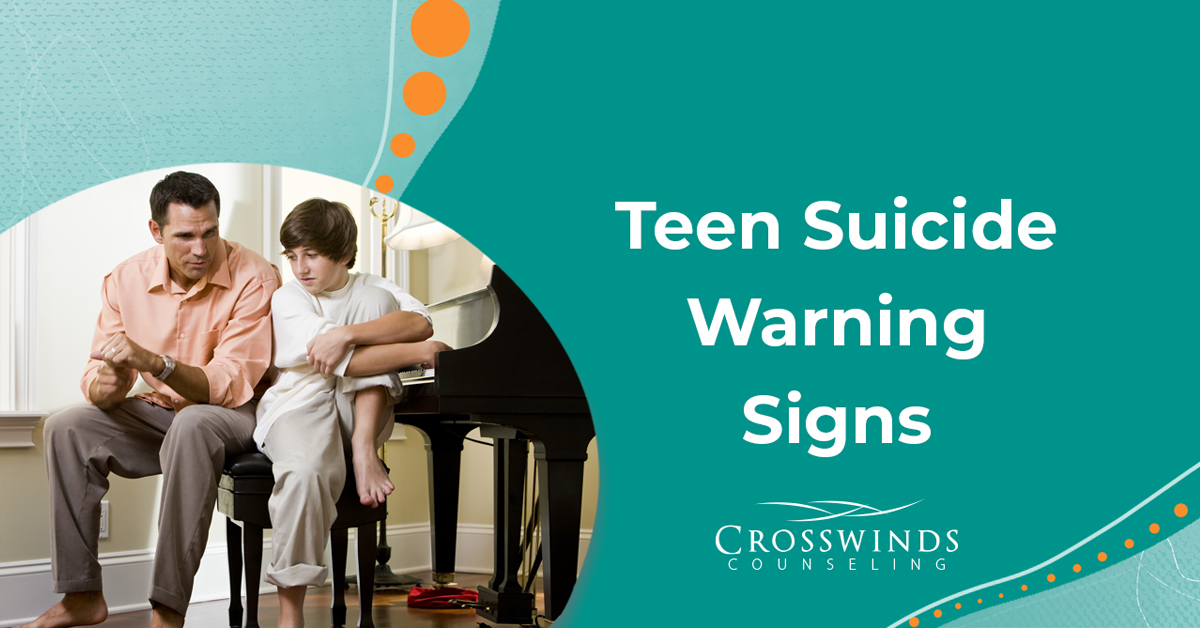
Know the Warning Signs of Teen Suicide
Suicide is the third leading cause of death among teens, making it crucially important to take threats of thoughts of suicide in your teen very seriously. Teens may not always state they are feeling suicidal, but more often than not they show signs of distress if this is an act they are considering.
Teen depression often leads to suicidal thoughts or feelings. Listen to any statements made by a teen related to feelings of depression or thoughts of harming themselves. Additionally, if there has been a teen suicide in your community, pay close attention to how your child is coping with the loss. Watch for significant changes in a teen’s behavior, such as isolating, decline in school performance, or verbalizing feelings of helplessness or hopelessness.
It is important to dispel the myth that talking with someone who makes statements like “life is not worth living” or “life is too difficult” might cause them to harm themselves. Actually, the reverse is true. Teens who are engaged in sharing their feelings are less likely to harm themselves. If your teen makes statements like this, ask them to elaborate about what is causing them to feel that way.
Stay involved in your teen’s life and keep communication flowing. Teens frequently experience peer pressure and /or bullying at school, which may cause them to isolate. If you notice a change in their behavior, such as significant weight fluctuations over a period of 1 to 2 months (10% or more weight increase or decrease), significant mood swings, evidence of drug or alcohol use, the decline in school performance, or loss of interest in spending time with friends. While one change may not seem critical, it’s the accumulation of several of these symptoms that warrant talking with a professional.
Teen Suicide Statistics
- Among students in grades 9-12 in the U.S. during 2013:
- 17.0% of students seriously considered attempting suicide in the previous 12 months (22.4% of females and 11.6% of males). Source
- 13.6% of students made a plan about how they would attempt suicide in the previous 12 months (16.9% of females and 10.3% of males).
- 8.0% of students attempted suicide one or more times in the previous 12 months (10.6% of females and 5.4% of males).
- 2.7% of students made a suicide attempt that resulted in an injury, poisoning, or an overdose that required medical attention (3.6% of females and 1.8% of males).
- The top three methods used in suicides of young people include firearm (45%), suffocation (40%), and poisoning (8%). Source
Signs & Risk Factors
- History of suicide attempts
- Family history of suicide
- Alcohol or drug abuse
- Stressful life event
- Loss of a loved one or someone close
- Access to lethal methods
- Exposure to suicidal behavior of others
- Incarceration
- History of depression or other mental illness
Resources
The National Suicide Prevention Lifeline
1-800-273-TALK (1-800-273-8255)
www.suicidepreventionlifeline.org
Centers for Disease Control and Prevention
Division of Violence Prevention: Suicide Prevention
If you think your teenager is at risk, contact us today. Teen suicide is preventable- learn how Crosswinds can help your family and improve your teenager’s quality of life.
